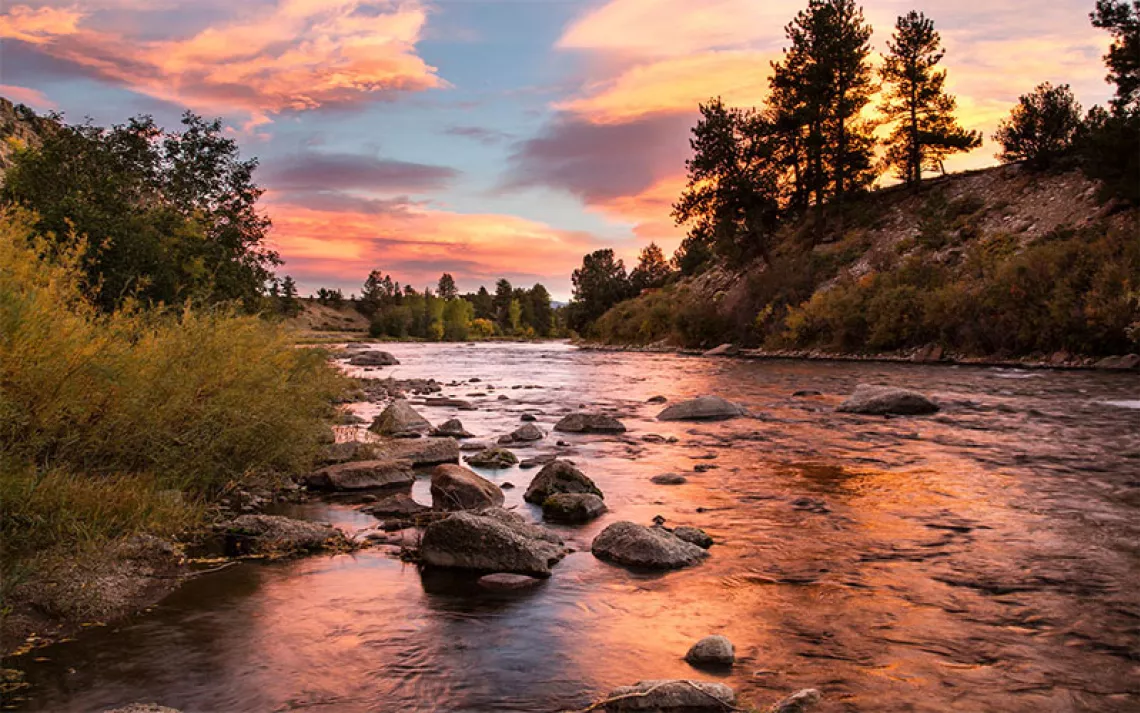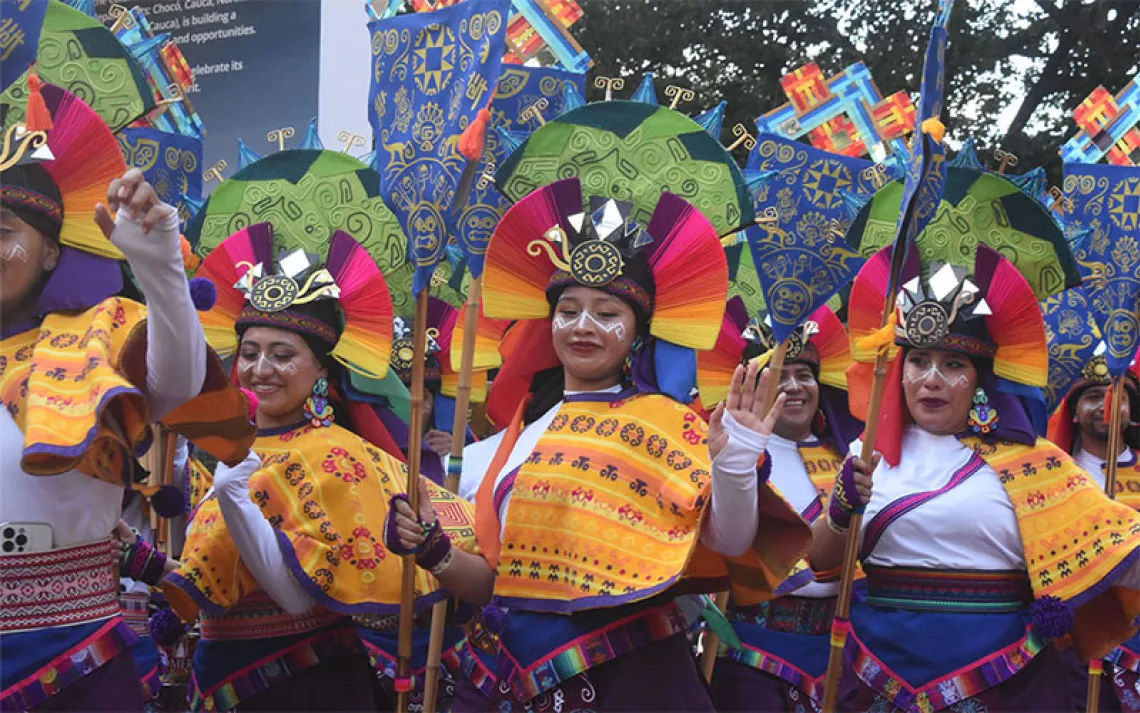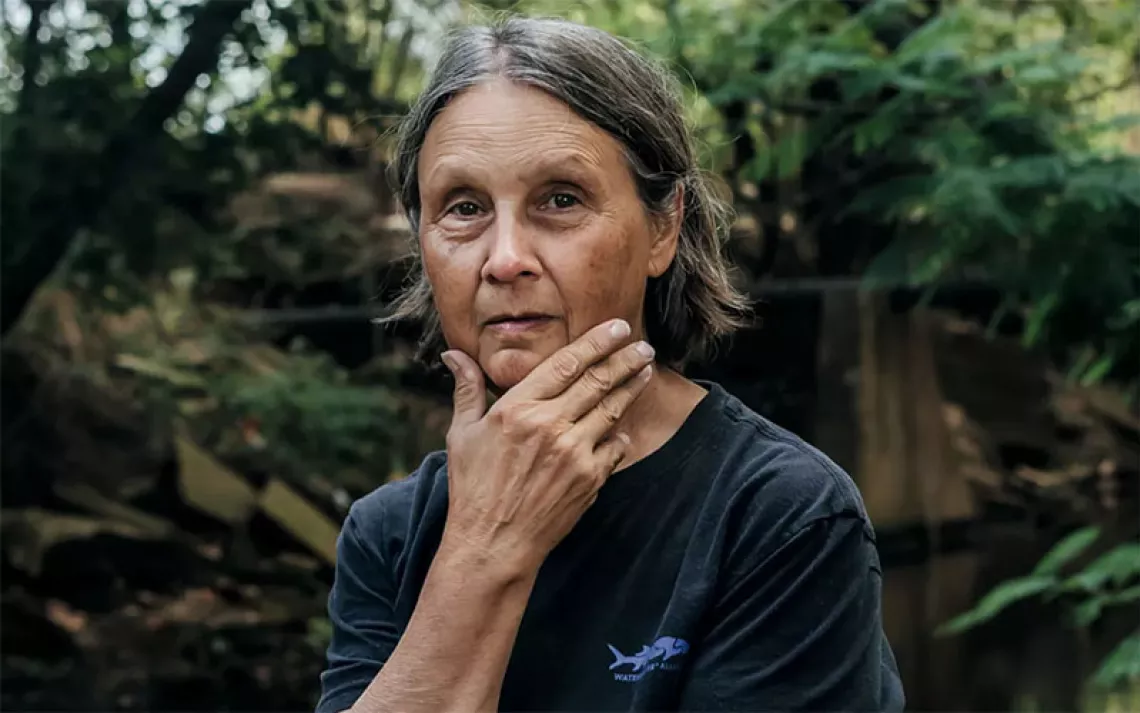Tribal Nations Play a Growing Role in Addressing the Biodiversity Crisis
Indigenous communities work to protect salmon, wolves, and condors
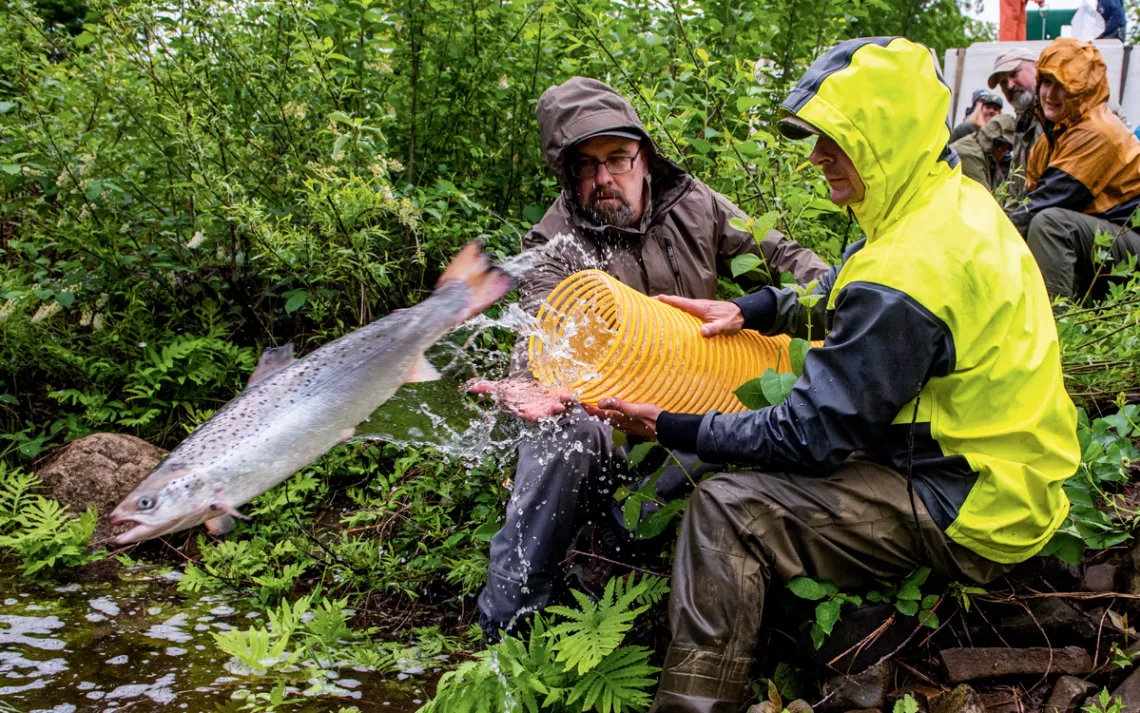
The Penobscot River in Maine is home to the largest remaining Atlantic salmon run in the United States. To help restore this endangered species, the Penobscot Nation is working with the Maine Department of Marine Resources to release hatchery-raised salmon into the river. Dan Kusnierz (left), the water resources program manager with the Penobscot Nation, and Graham Goulette, a NOAA Fisheries research technician, release Atlantic salmon through a hose.
FOR MOST WILDLIFE BIOLOGISTS, monitoring the health of animals consists of tracking wild creatures' whereabouts, radio-collaring them when necessary, and taking blood samples and weight measurements. For Mike Schrage, a biologist with the Fond du Lac Band of Lake Superior Chippewa, gray wolf conservation work comes with something extra: tobacco. Like many Ojibwe nations, the Fond du Lac uses tobacco during spiritual and cultural practices. When it comes to the band's wolf research program, tobacco is routinely used as a token of respect and reciprocity. Whenever a pup is weighed and measured, tobacco is placed near the den. When a necropsy is conducted in the field, tobacco is set on the ground near the body. These gestures reflect the band's reverence for the wolf, an animal that Fond du Lac members consider a brother. In the Ojibwe creation story, a wolf accompanied the first person who walked the earth.
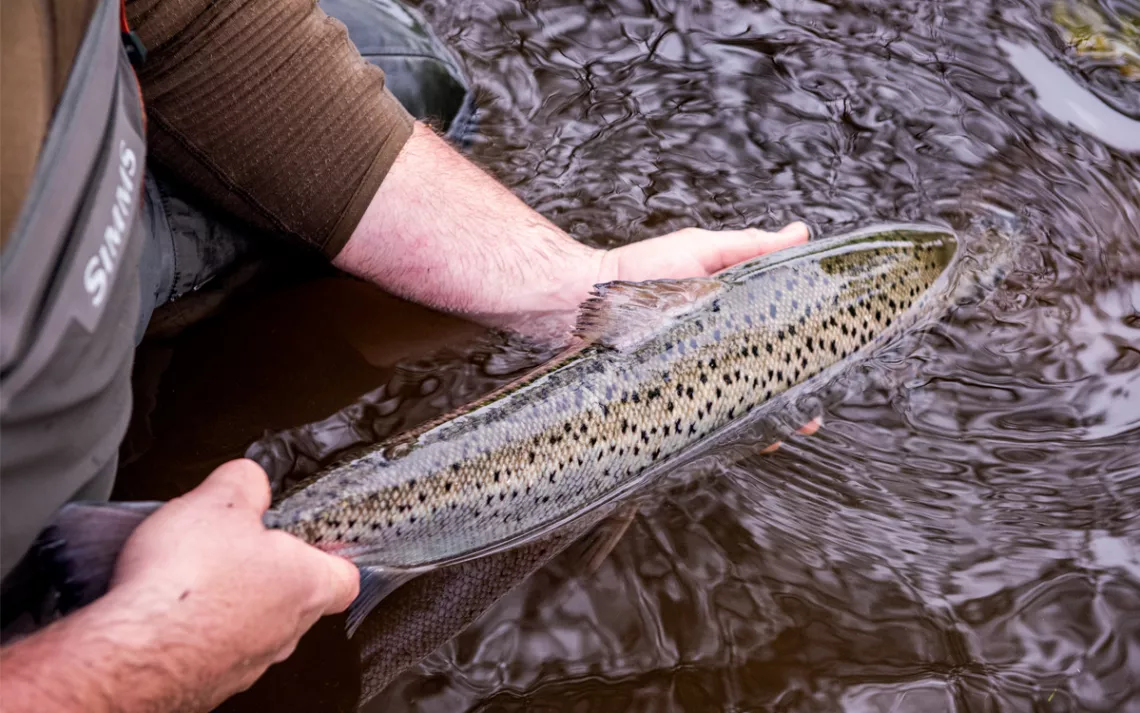
A fish is released as part of the Penobscot Atlantic Salmon Rehabilitation Project.
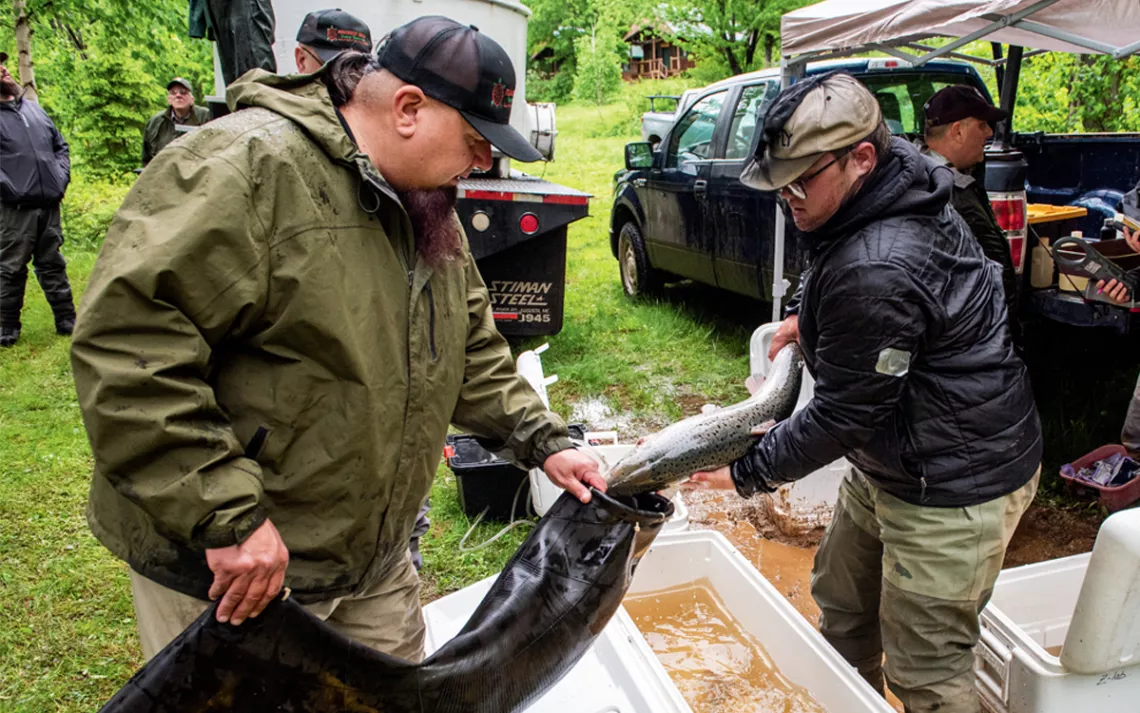
Jason Mitchell (left), the water resources field coordinator for the Penobscot Nation, and Jakob Hallett, a University of Maine undergrad student and project assistant, pull a salmon from a cooler before releasing it.
Across the United States, tribal nations play a vital—if often unheralded—role in species conservation. In the Lower 48, tribes manage roughly 45 million acres, an area about the size of North Dakota. This relatively undeveloped land combined with Indigenous people's traditional ecological knowledge of wildlife populations mean that tribes are uniquely positioned to help recover threatened and endangered species.
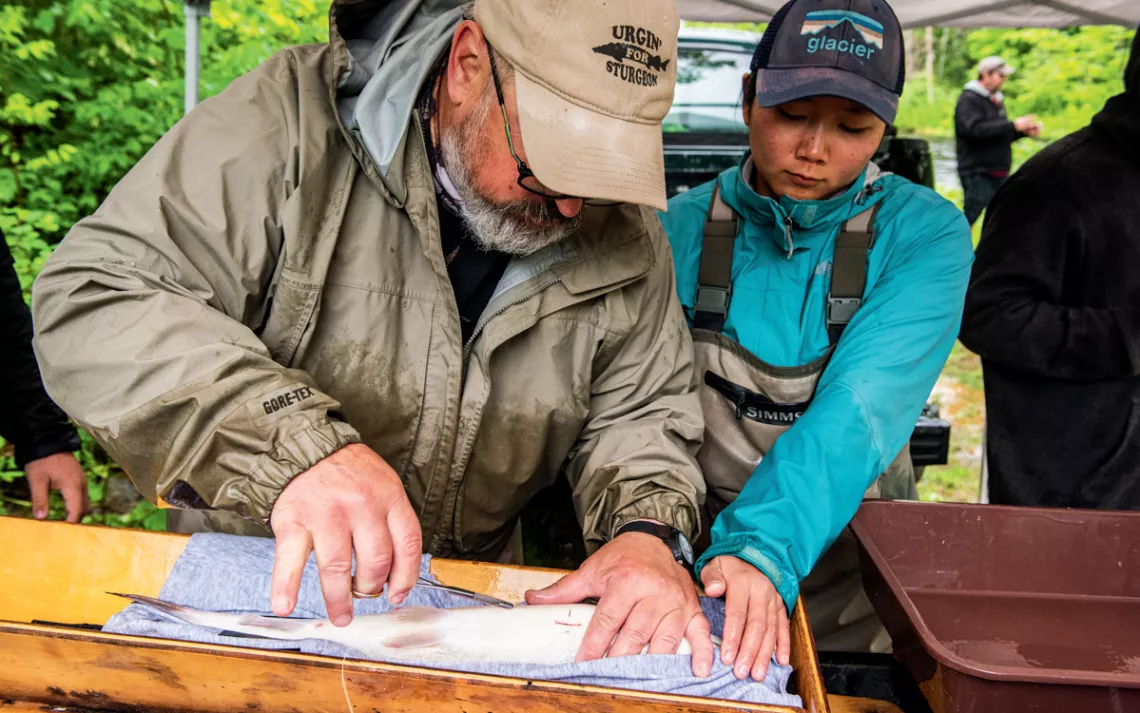
Joseph Zydlewski and Carolyn Merriam, both from the University of Maine, implant an acoustic telemetry transmitter into an Atlantic salmon.
In the past 40 years, federal-tribal partnerships have expanded to make use of Native communities' unique cultural connections to wildlife. The Shoshone and Arapaho Tribes in western Wyoming restored a portion of the Greater Yellowstone Ecosystem and established hunting restrictions in the 1980s—protecting elk, deer, and pronghorn. In the 1990s, several tribes began assisting federal officials with their black-footed ferret reintroduction program, which saw the wild population grow from 18 to 300 over three decades. And during Wisconsin's 2021 wolf-hunting season, during which nontribal hunters killed a fifth of the state's timber wolves in less than a week, some animals found refuge on the Ojibwe reservations.
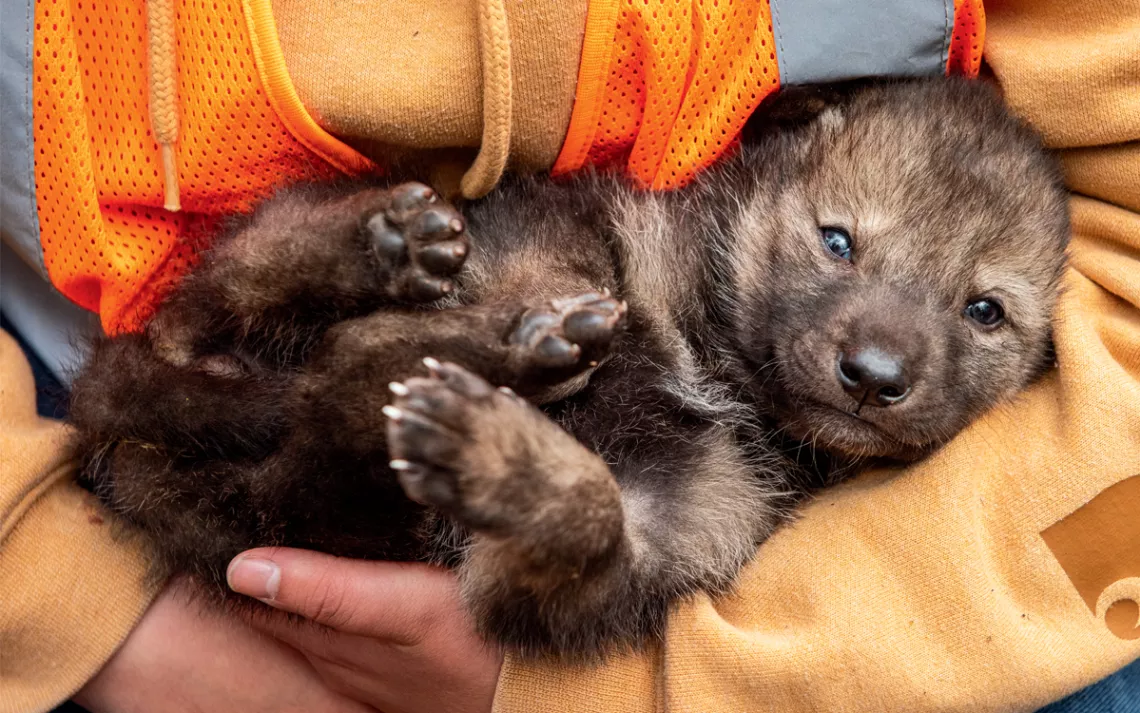
The Fond du Lac Band of Lake Superior Chippewa works with the Minnesota Department of Natural Resources to track threatened gray wolves.
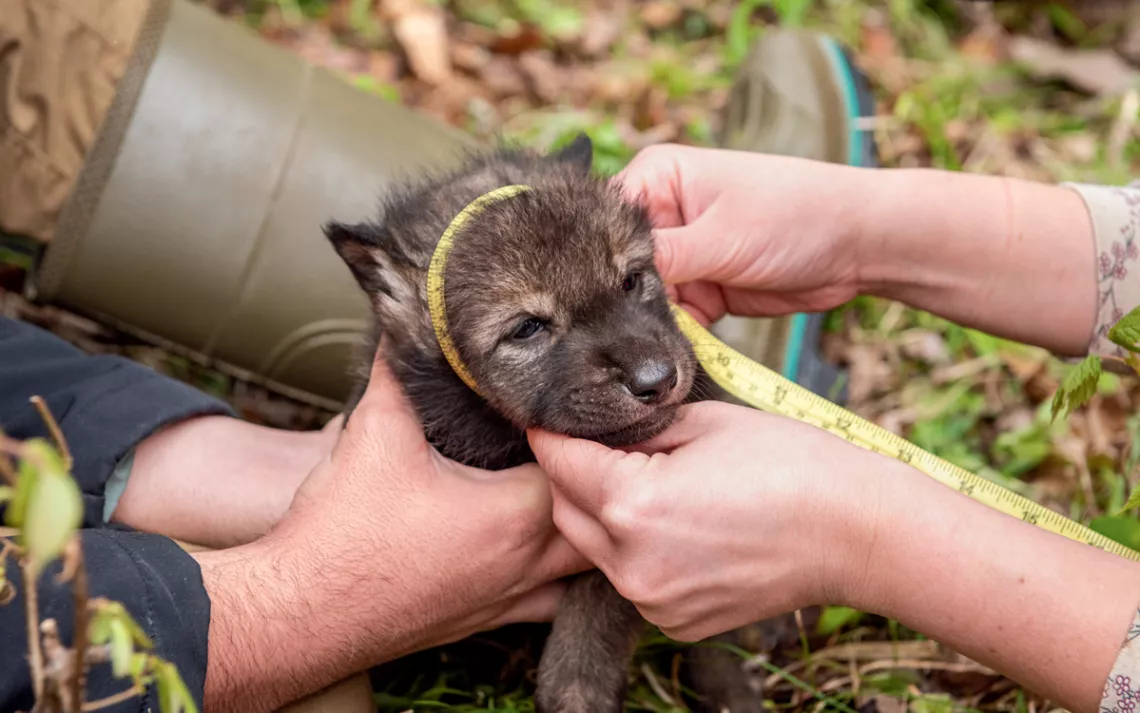
When they are about five weeks old, wolf pups are radio-collared and given ear tags so researchers can track their movements and keep tabs on mortality rates and causes of death.
Today, the Eastern Band of Cherokee Indians is restoring habitat for some of Appalachia's most threatened species, like the hellbender salamander and the Carolina northern flying squirrel. The Confederated Tribes of the Colville Reservation are working to return lynx to the Northwest. For other species, like the federally listed yellow-billed cuckoo and the southwestern willow flycatcher, tribal conservation plans have proved so robust that federal officials have agreed to forgo critical habitat designations on reservations where the birds are doing well. Emily Hagler, a wildlife biologist with the Native American Fish and Wildlife Society, says that tribal lands often serve as a "sanctuary from development." Tribal nations "aren't developing every square inch of land around a lake and selling it for economic benefit—that's not how tribal land is managed in most cases."
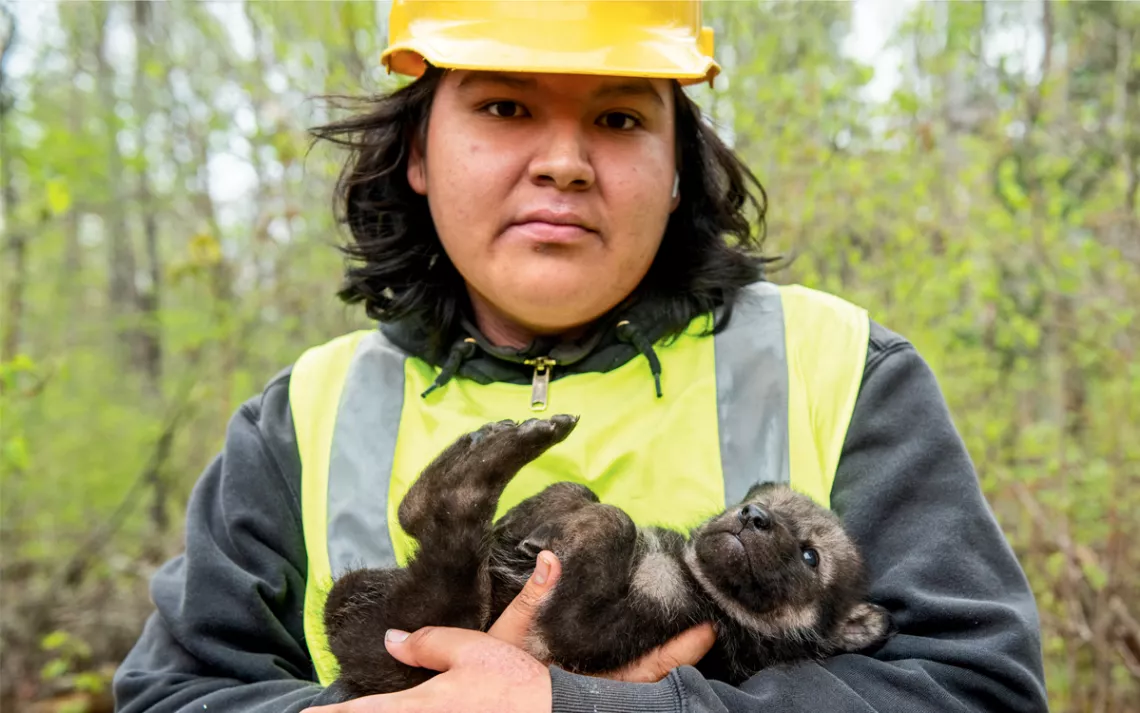
Devin Lintgen holds a gray wolf pup before scientists from the Fond du Lac Band insert a microchip under its fur.
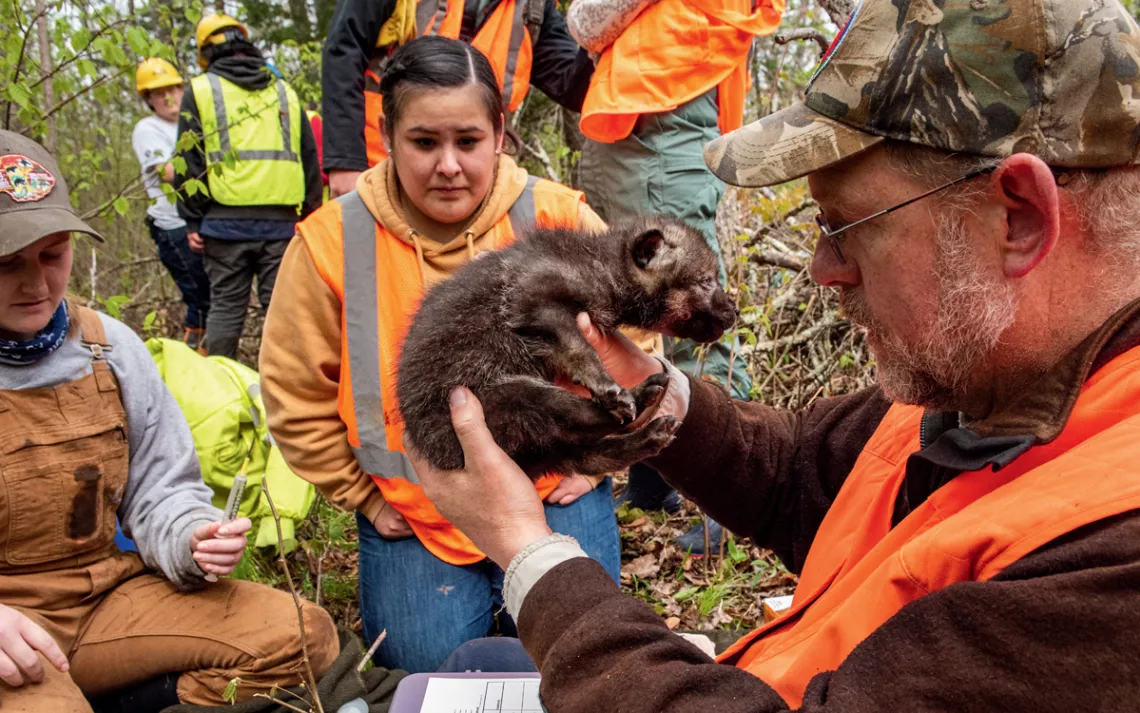
Mike Schrage, the band's wildlife biologist, holds a wolf pup as student Precious Tibbetts looks on.
Diné and Ho-Chunk photographer Russel Albert Daniels spent the better part of this year visiting such de facto sanctuaries and documenting tribal wildlife-recovery efforts. His travels took him from Maine, where the Penobscot Nation is reintroducing Atlantic salmon, to Minnesota to see the Fond du Lac Band's gray wolf program, and to the far northern reaches of California, where the Yurok Tribe is raising California condors. "I think most Native people have been stewards of the land since time immemorial and have done a righteous job," Daniels says. "And now scientists and biologists are looking back on what [tribes] used to do."
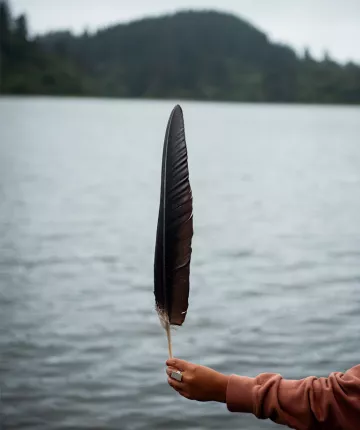
The Yurok Tribe has partnered with the National Park Service and the Fish and Wildlife Service to increase the population of endangered California condors, America's largest birds, with nearly 10-foot wingspans.
Throughout Daniels's career, his photographs have focused on underreported aspects of Indigenous communities, such as his project Two Spirit, which highlights Native Americans who identify as both male and female. His exploration of tribal programs to restore animals listed under the Endangered Species Act is his latest effort to reveal sometimes-overlooked aspects of Indigenous life. "It's been really incredible . . . to see tribal nations putting a ton of resources into these studies and rehab programs without having a financial return," Daniels says. "They want this peace and balance."
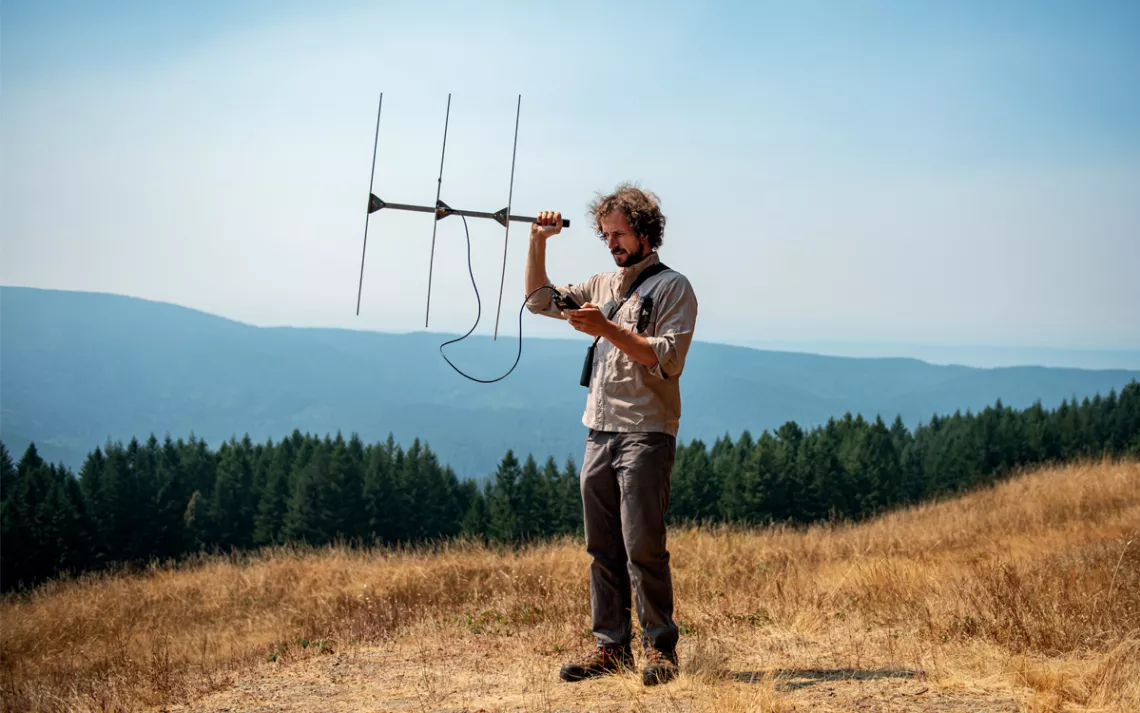
Patrick Myers, the lead field biologist and field crew supervisor for the Yurok Condor Restoration Program, uses a telemetry device to track the condors.

About 350 California condors now fly in the wild thanks to a captive-breeding program run by federal, state, and tribal partners.
The proven success of the tribal wildlife programs illustrates a crucial fact: Native cultures are, in general, unmatched guardians of ecosystems and their nonhuman inhabitants. Worldwide, Indigenous territories hold nearly 80 percent of the planet's biodiversity, even though such territories compose only about 20 percent of Earth's terrestrial surface. For most Native communities in North America, plants and animals are not just resources to be managed. They are what Potawatomi author and ecologist Robin Wall Kimmerer calls "nonhuman kinfolk." Humans, Kimmerer reminds us, are just one member of "the democracy of species."
In that sense, Indigenous-led wildlife conservation doesn't come from a sense of ownership and the tired notion of dominion, or even from a place of guardianship or stewardship. It is, instead, all about relationship: a recognition that other beings are, truly, something like cousins and kin.
 The Magazine of The Sierra Club
The Magazine of The Sierra Club
